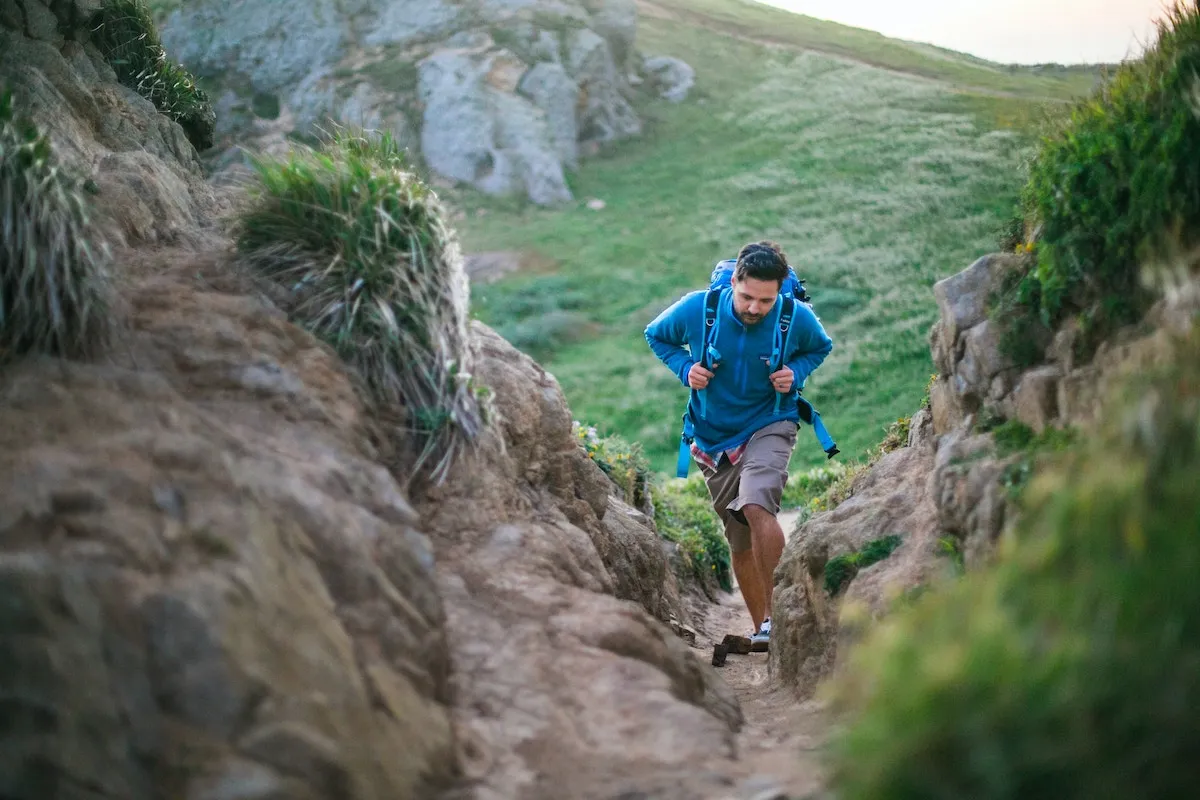Walking offers an immense amount of benefits that go well beyond just taking us from one place to another.
Whether you stroll through nature trails, briskly walk around town or hike up challenging ascents and descents, walking has a profound impact on both our physical and mental well-being.
Regular walking, especially when done outdoors, is a fantastic cardiovascular exercise that helps improve heart health, reduce the risk of chronic diseases and manage weight. It promotes healthy blood circulation, lowers blood pressure and enhances lung capacity.
Additionally, walking is known to release endorphins, the feel-good hormones, which alleviate stress, anxiety, and improve overall mood.
The combination of natural surroundings and moderate physical activity during a walk can significantly reduce cortisol levels, further contributing to mental relaxation and well-being.
Of course, by its very nature walking also uses a lot of muscles. Below, sports scientist and mountaineering and trekking coach Kate Sielmann explains what muscles you use when walking and explores how it can help you build muscle.
Does walking build muscle?
Walking, primarily when done on inclines or with additional weight like a backpack, can absolutely build muscle. Although it may not be as effective as resistance training, it engages various muscle groups and contributes to overall muscle tone and strength.
What muscles does walking work?

Walking is actually a full-body exercise that activates multiple muscle groups throughout the body. The four major muscle groups involved in walking are:
1. Legs
Walking primarily targets the quadriceps, hamstrings, calves, and glutes. The quadriceps on the front of the thigh extend the knee, while the hamstrings on the back of the thigh flex the knee.
The calf muscles, including the gastrocnemius and soleus, work to lift the heels during the push-off phase of each step.
Meanwhile, the glutes, particularly the gluteus maximus, play a crucial role in propelling the body forward and ascending steep slopes.
2. Core
The core muscles, including the abdominals and obliques, are actively engaged during walking to stabilise the torso, maintain balance and contract and relax the diaphragm with each breath.
3. Back
The muscles of the back, specifically the erector spinae and latissimus dorsi, help support the spine and maintain an upright posture while walking.
4. Arms
Though less emphasised, the arm muscles, including the biceps and triceps, play a role in swinging the arms back and forth while walking.
What does walking do to your body shape?

Walking, when done consistently and often, enhances overall body shape, especially when combined with a balanced diet.
While it may not lead to significant muscle hypertrophy like lifting weights, it can help tone and firm the above four muscle groups, resulting in a more defined appearance.
Regular walking can also contribute to weight management and fat loss, which further enhances body shape and promotes a leaner physique.
Is it better to walk or run to build muscle?
The choice between walking and running to build muscle depends on individual preferences, fitness levels and overall goals.
Running is a higher-impact exercise that can burn more calories and may result in more significant muscle development, particularly in the lower body. However, it isn’t suitable for everyone, as it can put stress on joints.
On the other hand, walking is a more accessible and sustainable exercise for people of all ages and fitness levels.
While it may not promote muscle hypertrophy as effectively as running, it provides a low-impact way to strengthen muscles and improve overall fitness without overloading the body.
Walking outdoors vs. walking indoors/around town
While walking outdoors on trails offers numerous advantages, including exposure to nature, fresh air and varying terrains that challenge different muscle groups, walking indoors or around town on pavements can also be beneficial.
Walking in urban areas may be more convenient for some individuals, and incorporating regular walks into daily routines, even if it's just for a short duration, can still provide valuable health benefits.
Walking is a remarkable form of movement that goes beyond merely being a means of transportation. Its positive impact on cardiovascular health, mental wellbeing and muscle engagement make it an ideal activity for people of all ages.
Whether you're exploring nature trails or strolling around your neighbourhood, incorporating regular walks into your routine can lead to a healthier, fitter, and more energetic you.
Top image credit: Getty Images
